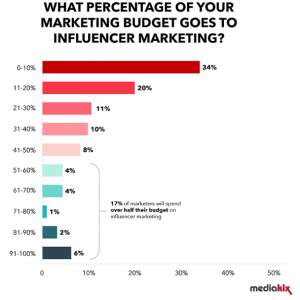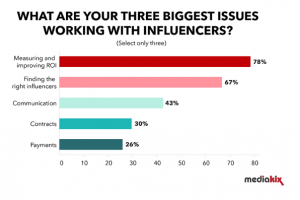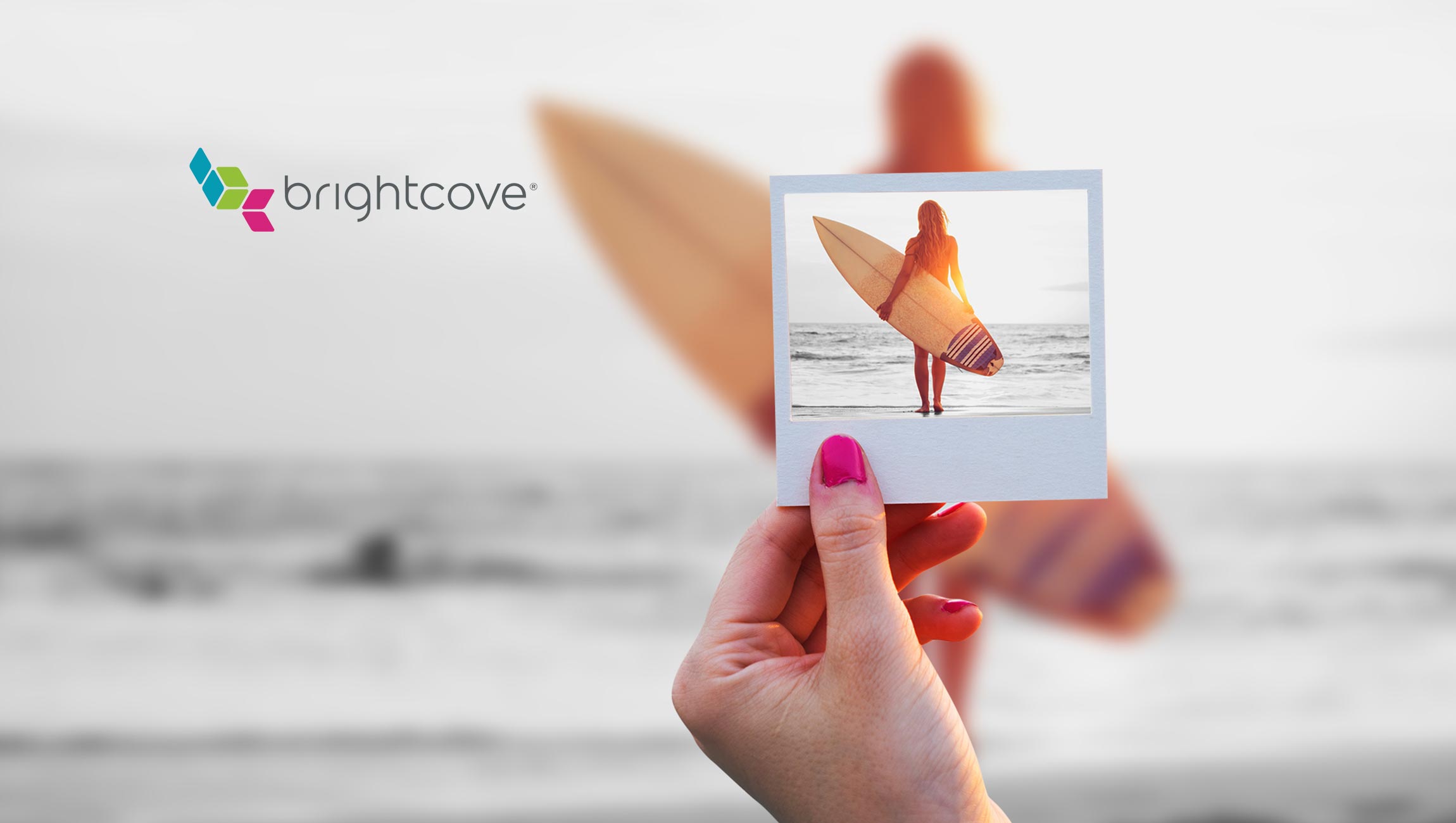Influencer Marketing is on track to hit $15B in investment by 2022, according to Business Insider. The premise of Influencer Marketing is easy to buy in to – collaborate with individuals that create authentic, aesthetically-pleasing content that people on Instagram “like”. There has been a lot of hype around Influencer Marketing since its inception, and for good reason; Influencer Marketing is working. According to a survey done by Mediakix, 89% of marketers find that Influencer Marketing delivers ROI that’s equal to or better than other Marketing channels.
If so many experts feel it works so well, then why hasn’t Influencer Marketing completely taken over? The challenge is getting metrics you can count on to back up your investment and validate future investments into the influencer media funnel. These two things are required for obtaining relevant metrics:
- Influencer content reaching the target audience
- Trackable and measurable results
Reaching the target audience continues to get more complicated with the continuing decline in organic reach, and measurement has always been a challenge for brands wanting to scale Influencer Marketing. This is where paid social enters the equation. Paid social gives brands the ability to amplify their message to targeted audiences and measure the results, turning Influencer Marketing into a major media channel.
So, how do you use paid social to accomplish this? You can transition your influencer advertising efforts into a major media channel by implementing one of two things: the Branded Content Tool or whitelisting, which we will dive into later in this article.
Benefits and Limitations of Influencer Marketing
71% of brands say they receive higher-quality customers and traffic from Influencer Marketing compared to other sources. Why is that? It’s simple really: people want to engage with people, not brands. Worded differently, consumers are far less interested in brands talking about themselves than they are their peers, inspirations, and other relations talking about brands. For this reason, promotions from influencers read as more authentic and trustworthy to the consumer. According to a survey done by Olapic and Cite Research, 51% of respondents said they trust user-generated images more than brand-owned creative. The numbers don’t stop there:
- 62% of respondents consider travel images from a real person to be the most influential form of endorsement.
- For beauty products, 72% of respondents consider a real person’s endorsement to be the most influential.
- For fashion items, 71% of respondents would trust the reviews of past customers.
- 34% of respondents have discovered a new product through an influencer’s post.
- 29% have even bought something based on an influencer’s post.
- 75% say that it makes their marketing more authentic.
Looking at the data, it’s no surprise that Influencer Marketing continues to expand exponentially.
Read More: Incorporating Human Touchpoints Alongside Technology to Improve Customer Service
Despite the success of Influencer Marketing, over 50% of companies spend less than one-fifth of their Marketing budget on influencer outreach.

*source: Mediakix
This begs the question:
If companies are getting significant returns on their Influencer Marketing investments, why are they investing a small fraction of their budget to it?
Influencer Marketing is tough to scale across distribution and measurement, leaving brands skeptical of designating a large portion of their budget to it.
While Influencer Marketing is undoubtedly effective in producing quality content and driving brand awareness, lack of measurement is limiting. Influencer Marketing cannot yet target specific audiences with the same precision as other Digital Marketing channels. Influencers are hand-selected, with the hope that their content will eventually reach and speak to the brand’s target audience. In other words, there’s very little assurance that you’ll reach who you need to.
Considering the challenge of measuring ROI and limits of control over the target audience, it’s understandable why many brands aren’t willing to commit meaningful spend on their Influencer Marketing programs. The uncertainty of promising results leads to difficulty in scaling Influencer Marketing efforts – the number of likes and shares don’t cut it anymore. 78% of companies said that measuring and improving ROI is their biggest issue when working with influencers.

*source: Mediakix
Influencer Advertising: Don’t Rely on Social Media Algorithms
As already stated, organic reach has its limits, so paid social is what makes Influencer Marketing the successful media channel it truly is.
Paid social allows specific audience targeting and it unlocks the power to reach net-new audiences, specifically influencer follower (and lookalike) audiences. All of the concerns about not being able to reach the right consumer? Gone. Paid social gives you the power to reach people most likely to engage with influencer content. And, when your influencers are selected properly, paid social gives you the power to find your consumers at scale.
Paid social brings real numbers to influencer marketing. Running paid campaigns through your Facebook ad account gives complete access to full-funnel performance data. You’re able to analyze performance metrics like CPM, CTR, CPC, and CPA to see how each piece of content is performing. This is an excellent way to identify which kind of content is resonating with your audience.
The traditional approach to paid social + influencer is running brand ads with influencer creative. Influencer advertising leverages influencer identity, audience, and creative to deliver a more effective channel that incorporates real people and social proof. Treating influencer advertising as a true performance media channel allows you to measure what content performs well, which influencers drive success for your brand, and extend your reach significantly into high-affinity influencer audiences.
There are two ways to do this: Instagram’s Branded Content Tool and whitelisting.
Read More: 5 Essential Things to Know Before Bringing Programmatic In-House
Using Instagram’s Branded Content Tool For Influencer Ads
Instagram has recognized the benefit of promoting content from a person over a brand, leading to the launch of its Branded Content Ads tool. Branded Content Ads allows brands to promote an influencer’s posts through feeds and Stories. This feature promotes transparency, as influencers can tag the partner band in their posts. Brands benefit from this feature by reaching people who aren’t already following the influencer.

Let’s review the benefits and limitations of what you can do with the BCT:
Benefits:
- Posts from influencers who have access to the BCT and tag your brand flow directly into Facebook ads manager (with some exceptions).
- End users see the content as coming from influencer identities.
- Brands can use targeting from their ad account and brand custom audiences.
Limitations:
- No ability to edit post captions, which means you will be unable to optimize them for a better impact.
- No ability to A/B test taglines.
- No freedom to insert fresh creative for the dark post (e.g. insert a brand image into a carousel or at the end of a story).
- No option to promote carousel posts, which is limiting given the effectiveness of this specific format.
- At the time of writing this post, no ability to use certain objectives like conversions and mobile app install.
- No access to or ability to explicitly target the influencer’s audience (or a LAL built off the influencer’s audience).
Instagram clearly recognizes the power of influencer as a media channel and the BCT was a step in the right direction, but it leaves a lot to be desired.
Read More: How to Motivate Your Service Organization for Customer Success
Influencer Whitelisting goes beyond Instagram’s Branded Content Tool.
What is whitelisting? Whitelisting is the process for gaining advertising permissions to an influencer’s account(s) in order to run ads through the influencer’s identity and access audiences associated with the influencer’s Instagram handle and Facebook page.
When creators grant advertising permissions:
- Brands can create dark posts – posts that do not show up on an influencer’s feed and are identified by the tag “sponsored”.
- Brands can change a post’s caption and/or call to action when they boost the post.
- High-level performance insights such as engagement, reach, and impression are available for both paid and organic posts.
- Brands have full control over how a paid ad is run.
Sounds like whitelisting is the perfect solution, right? There are a few things to make sure to define during outreach and negotiations to avoid some headaches. Influencers must grant access to their accounts, and this comes with potential security concerns. Whitelisting requires clearly defining the scope of identity and content usage rights and terms in a contract. No one should grant access forever or without restrictions. Since whitelisting is an emerging tactic, there are not industry norms for how influencers approach pricing or usage rights terms. This process can lead to a lot of back-and-forth over contract language. In a survey of influencers run in Q4 2019, the split between influencers that included usage rights in their rates and those who charged a separate licensing fee was about 50/50. How do influencers charge for whitelisting and usage rights goes into detail about how to structure agreements and what to expect to pay from a licensing standpoint.
The basic set of items that need to be captured in an influencer agreement are:
- Content ownership and ability to repurpose (content usage rights)
- Whitelisting or SocialCert expectations
- Content and copy editing agreement
- Influencer’s Instagram profile requirements (business account or creator account requirement needs to be defined)
- Time period for usage rights
- Posting schedule and requirements (types of posts, hashtags, placements, etc.)
- Payment and terms
- Exclusivity and social activity
It is worth noting the challenges that come with whitelisting:
- Whitelisting requires setting up access with each influencer. The process is manual and prone to user error, which makes it a tough process to scale.
- Some influencers (and agents) are hesitant to grant whitelisting access to their account (although it is MUCH more common now with 80% of influencers being asked for whitelisting as part of a campaign).
Although there are a few challenges of whitelisting, the upside of incorporating influencer ads into a paid social strategy is too large to ignore. It’s clear that integrating the two communicates authenticity and trust to the customer, as well as provides you with tools to measure and ultimately scale your campaigns.
What’s Next for Influencer Marketing + Paid Social?
The intersection of influencer marketing and paid social combines the best features of each channel to create a powerful media channel. Amplified influencer posts not only help you target highly relevant people outside of the influencer’s audience base, but they also add credibility and authenticity to draw them in.
This powerful combination is the perfect solution to scale your influencer marketing efforts and meet specific brand standards. The emergence of new technology and tools to support these efforts makes it much easier to scale influencer marketing. With the ability to scale, we should expect to see influencers turning into an invaluable media channel for small and established brands alike.











